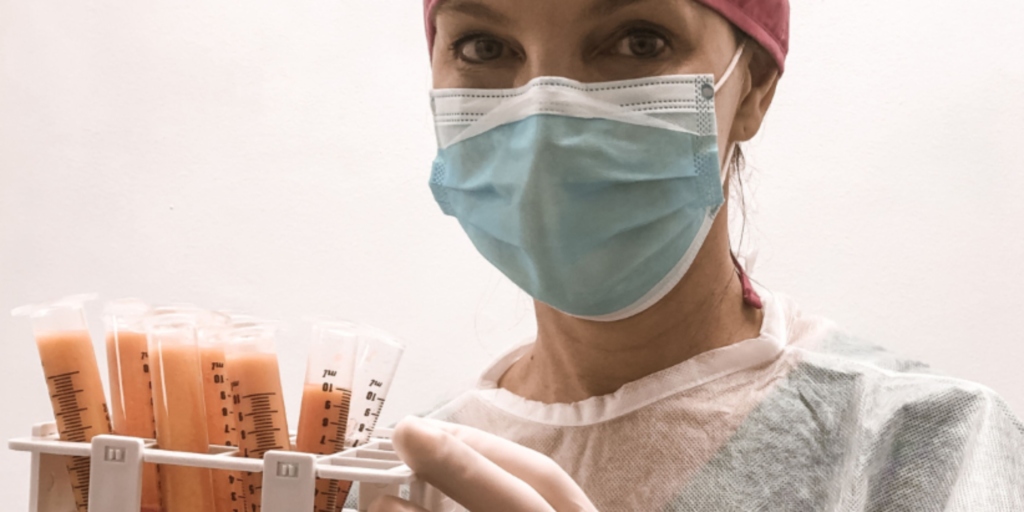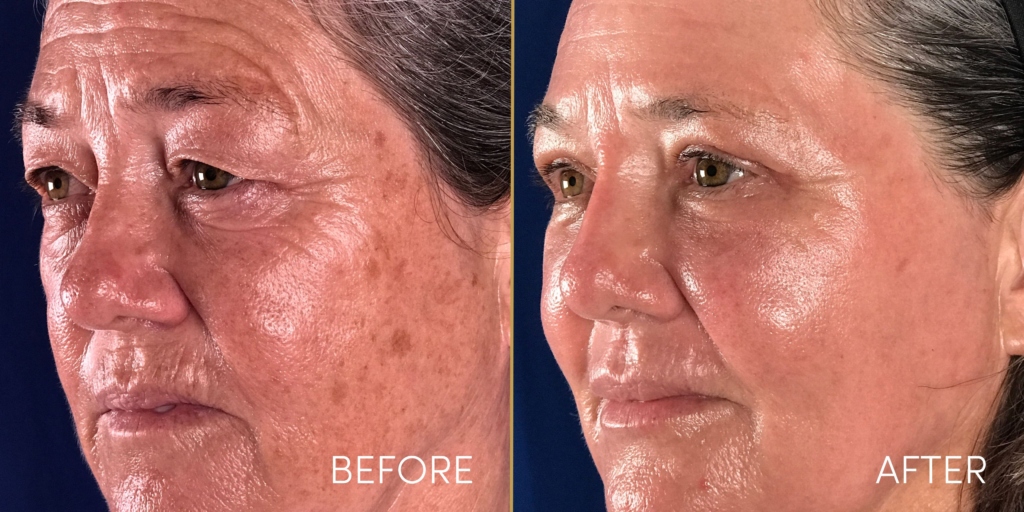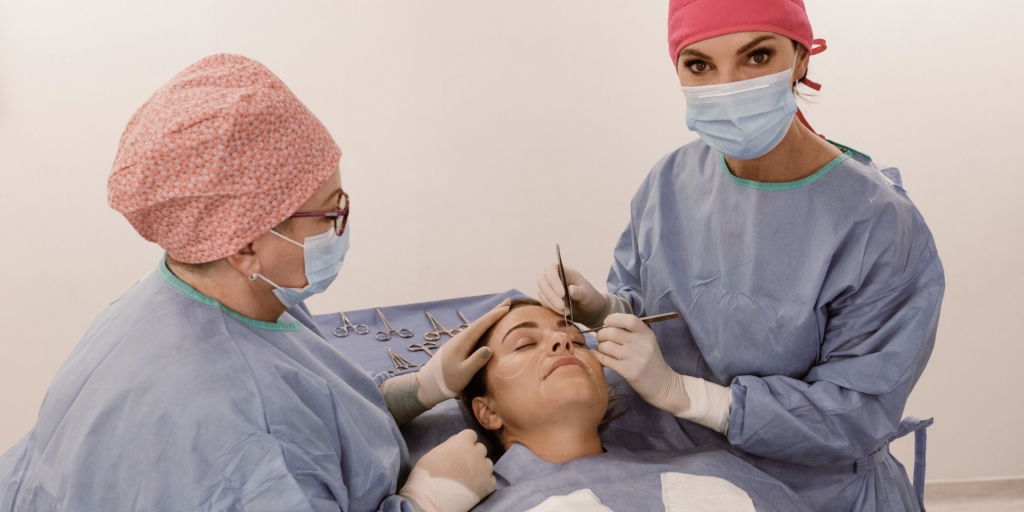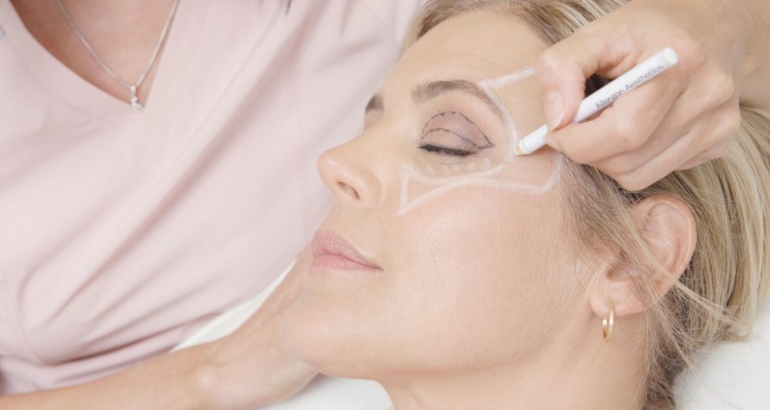Written by: Dr Nerina Wilkinson – MBChB (Stell), FCS Plast (SA)
A youthful appearance is characterized by soft, beautiful curves and radiant skin, achieved through well-placed volume. For a fully rejuvenated look, it is crucial to enhance both volume and skin quality, and not simply “excise or lift the skin” alone. Many patients have had technically good traditional facelifts but without addressing volume and skin texture within the same procedure; these results have often fallen short of a truly refreshed, youthful look.
The need for enhancing both volume and skin quality within the same procedure without actually “going under the knife” has therefore led to the creation of the scar-free StemCell4DLift, our top regenerative medicine procedure.
What is regenerative medicine?
Regenerative medicine in aesthetics focuses on using advanced medical techniques to rejuvenate and enhance the appearance of the skin and other tissues. It leverages the body’s natural healing processes to improve skin quality, reduce signs of aging, and promote a youthful appearance. Key approaches include:
- Stem Cell Therapy: Using stem cells to regenerate and repair skin tissue. These cells can differentiate into various types of skin cells, promoting collagen production, improving skin elasticity, and reducing wrinkles and fine lines.
- Platelet-rich plasma (PRP) Therapy: Involves injecting concentrated platelets from the patient’s own blood into targeted areas. PRP releases growth factors that stimulate collagen production and cell regeneration, leading to improved skin texture, tone, and overall appearance.
- Microneedling with Growth Factors: This technique uses fine needles to create micro-injuries in the skin, stimulating the body’s natural healing process. When combined with growth factors or PRP, it enhances collagen production and skin rejuvenation.
- Fat Grafting with Stem Cells: Harvesting fat from one part of the body, processing it to concentrate the stem cells, and then injecting it into areas needing volume and rejuvenation. This helps restore facial volume, smooth out wrinkles, and improve skin quality.
- Exosome Therapy: Utilizing exosomes, which are small vesicles containing proteins, lipids, and RNA, to promote cell communication and regeneration. This can improve skin texture, reduce pigmentation, and enhance overall skin health.
Regenerative medicine in aesthetics aims to achieve natural-looking results by enhancing the body’s inherent ability to heal and regenerate, providing a less invasive alternative to traditional cosmetic procedures (such as the scar-less stem cell facelift). Let’s take a closer look at that below.
What is a scar-less stem cell facelift?
The stem cell facelift is a growing trend in facial plastic surgery. While not a traditional facelift, it employs advanced fat grafting techniques and stem cell therapy to smooth the skin’s texture and reduce fine lines, resulting in a more youthful look. Our signature StemCell4DLift improves on the stem cell-only procedure by utilizing 4 techniques that work in synergy in one surgical session i.e. Fat grafts, ADSC (adipose-derived stem cells) in the form of Nano fat, PRP (platelet-rich plasma), and CO2RE Fractional Co2 laser resurfacing.
This signature Adipolaser technique is one of my most popular procedures for delivering a scar-less facelift that rejuvenates and regenerates the facial tissues, achieving the most natural-looking results.
Who is the ideal candidate for a scar-less stem cell facelift?
This procedure is perfect for patients noticing early signs of aging, such as facial deflation, hollowness, sagging, fine lines, irregular pigmentation, and loss of skin elasticity. The stem cells’ regenerative power makes this treatment ideal for anyone looking to ‘slow down’ the aging process.
In my practice, I recommend this procedure to patients seeking facial fillers who need more comprehensive volume restoration and skin tightening for a youthful appearance.
How is a stem cell facelift done?
Unlike a normal facelift, in which the flaccid skin is excised to create an artificial firmness, an Adipolaser lift (StemCell4DLift) is performed solely by injection and laser. The procedure is performed under local anaesthetic in the day clinic.
The procedure involves firstly harvesting fat from a part of the body with abundant fat deposits using a Tulip Tonnard 2,4mm cannula The fat is then centrifuged at 1000 rpm for 2 minutes, purified, and divided into fat grafts and nano fat. The fat grafts are precisely injected into the deeper layers of the face to improve the contours and create an uplifting effect.
The nano fat Also known as micro-fat grafting is a refined process of fat grafting where the fat cells are specifically emulsified using Tulip Nano Transfer Membrane. The nano fat is therefore used in very delicate areas ie periorbital, perioral, and fine lines. The nano fat is layered superficially under the skin harnessing the potential of the rich stem cells to improve the quality of the skin.
As stem cells are nature’s way to regenerate new cells in targeted areas, the results are noticeable in a firmer and more youthful appearance of the face. The skin becomes tauter and plumper which improves over months to years.
The final step in the procedure is the Co2Re fractional laser.
Essentially, the upper layers of the skin are vaporized, removing the superficial skin layers. This direct photo-thermal and photo-biostimulation effect, therefore, removes the dull upper layers of the skin, stimulates new collagen, and enhances the survival of the fat injections. This leaves the targeted area of the skin feeling tighter and looking rejuvenated.
What is the significance of including CO2 laser?
This is explained in a recent study published in 2017 (Lasers Med Sci: 32:117-127) In vitro fractional CO2 laser applied to human ADSC (Adipocyte derived stem cells) The results were significant increases in the cell viability/proliferation compared to controls. The study explained that through bio-photo-stimulation the CO2 laser stimulates the mitochondria which by activation of Redox pathways increases cell proliferation and enhances a significant cell secretion of VEGF, MMP2, and MMP9, The increased VEGF are functional in inducing angiogenesis and therefore improved blood supply to the transferred fat. Whereas the MMp2 and MMP9 assist in tissue remodeling.
Additionally, Fractional lasers create numerous microscopic thermal injury zones that induce the growth of cells following the release of FGF (fibroblast growth factor) and EGF (epidermal growth factor)
Similar results are shown in a study of Fractional laser-assisted hair growth. Visibly enhanced hair growth i.e. Hair follicle neogenesis/hair follicle regeneration secondary to CO2 Laser wounding and Growth factors has been demonstrated.
Scar-less stem cell facelift recovery
Due to CO2 fractional laser being included in this signature procedure, patients are more swollen and bruised than if they underwent the simpler liquid facelift. It is a fairly invasive procedure with 7 days of downtime required afterward. The advantage is that the results are more permanent and the stem cells in the fat have regenerative potential.
Procedures including CO2RE fractional laser are therefore indicated for patients looking for a once-off treatment to improve their skin rather than multiple less invasive skin rejuvenating treatment
The future of skin rejuvenation
Regenerative medicine is an exciting field with the potential to change our conventional surgical approaches to facial rejuvenation. Beautification naturally is the future, and therefore the significant results of the non-surgical StemCell4DLift are becoming the gold standard procedure in my practice.
Email us at capetown@drnwilkinson.co.za to request more information.







